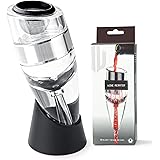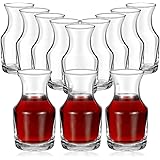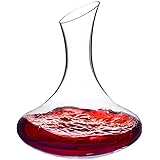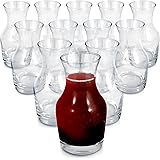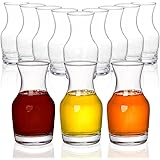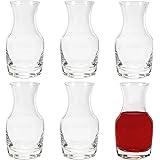Understanding the Unique Aging Processes of Wine and Whiskey
As briefly discussed in the video above, the aging of wine and whiskey presents a fascinating study in contrast, even though both beloved beverages frequently utilize oak casks for their maturation. While they share a common vessel, their journeys within these barrels and beyond are remarkably distinct, profoundly influencing their final flavors and characteristics. Understanding these fundamental differences in wine and whiskey aging helps us appreciate the complexity and artistry behind each sip.
The Common Ground: Oak Barrels in Wine and Whiskey Aging
Both wine and whiskey producers rely heavily on oak barrels to impart desirable flavors and textures during the aging process. Oak is not just a container; it is an active ingredient that contributes significantly to the final product. The wood allows for slow oxidation and contributes compounds like vanillin, lactones, and tannins, which shape the aroma and taste profiles of both beverages.
However, the similarities largely end with the material of the barrel. The preparation and utilization of these oak vessels diverge sharply, setting each spirit on its unique path. This crucial initial step dictates much of the subsequent aging of wine and the distinctive characteristics of whiskey aging.
Divergent Paths: Toasted vs. Charred Barrels
One of the most significant differences lies in how the oak barrels are treated before they are filled. For wine, barrels are typically “toasted,” meaning the inside is gently heated with flame or radiant heat for a controlled period. This process coaxes out specific compounds from the wood, adding notes of vanilla, spice, and toastiness to the wine, while softening its tannins. The toasting level can vary, from light to heavy, depending on the winemaker’s desired influence.
In stark contrast, whiskey barrels are “charred,” which involves burning the inside of the barrel until a layer of charcoal forms. This intense charring acts as a filter, removing harsh sulfur compounds from the distillate and creating a rich, caramel-like flavor. The charred layer also releases flavorful compounds that contribute to whiskey’s characteristic color and taste, making it a pivotal step in its maturation process.
The Time Factor: Barrel Aging Duration
The length of time wine and whiskey spend in their respective oak barrels varies dramatically, illustrating another key distinction in their aging. As the video highlighted, wine typically undergoes a much shorter period of barrel aging, often not exceeding two years. This shorter duration allows the wine to develop complexity without becoming overwhelmed by oak flavors.
Whiskey, on the other hand, can spend considerably more time in barrels, sometimes aging for 50 to 80 years. This extended barrel aging allows for a much greater interaction between the spirit and the wood. Over decades, the whiskey slowly extracts compounds from the oak and undergoes subtle oxidation, leading to profound depth, smoothness, and intricate flavor development.
The Bottle’s Role: A Final Maturation Stage
Perhaps the most fascinating difference between wine and whiskey aging occurs once the liquids are bottled. For wine, the aging journey often continues for decades in the bottle, even after spending only a couple of years in oak barrels. After two years in a barrel, many fine wines can evolve for 30 to 40 years or more in the bottle, developing complex tertiary aromas and flavors like earthy notes, leather, and dried fruit. This bottle aging relies on slow chemical reactions, primarily reduction, occurring in the absence of oxygen.
Conversely, whiskey ceases to age once it is bottled. A whiskey bottled today will taste exactly the same in 50 years as it does right now. The protective glass bottle prevents any further interaction with oxygen or wood, effectively halting the maturation process. This means that the age statement on a whiskey bottle always refers exclusively to the time it spent in the barrel, not the time spent in the bottle.
Understanding the “Why”: Chemistry of Aging
The chemical processes driving these distinct aging behaviors are quite complex, yet fascinating. During barrel aging, both wine and whiskey experience slow oxidation through the porous oak, which helps to soften tannins in wine and smooth out rough edges in whiskey. The wood also leaches compounds into the liquid, contributing to its aroma and flavor profile.
For wine, bottle aging is crucial because it allows specific chemical reactions, such as esterification and polymerization, to continue at a very slow pace. These reactions create new flavor compounds and reduce existing ones, leading to greater complexity and nuance. Whiskey’s maturation, however, is heavily dependent on the barrel environment, where temperature fluctuations and wood interaction are vital. Once bottled, these crucial environmental factors are removed, stopping its evolution.
Beyond the Basics: Other Factors Influencing Aging
While barrel treatment and duration are primary factors, several other elements also influence the aging process for both beverages. For whiskey, barrel size plays a role, with smaller barrels leading to faster maturation due to increased liquid-to-wood contact. The climate of the aging warehouse, with its temperature and humidity fluctuations, also significantly impacts evaporation and extraction rates. For wine, factors like grape variety, vintage, and closure type (cork vs. screw cap) can influence its potential for bottle aging.
Additionally, the specific type of oak used, whether American, French, or another origin, introduces different flavor compounds to both wine and whiskey. Each oak type imparts unique characteristics, further diversifying the final product. Understanding these nuances helps appreciate the incredible diversity in the world of aged beverages.
The distinct aging processes of wine and whiskey are truly fascinating, offering a rich tapestry of flavors and aromas. From the contrasting barrel treatments to their remarkably different bottle aging potentials, these methods underscore the unique traditions and scientific principles behind each drink. The next time you enjoy a glass, remember the unique journey it took, highlighting the captivating aging of wine and whiskey.


